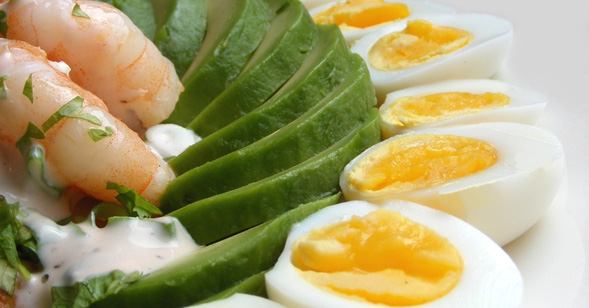
Breaking Down Cholesterol
In my last post Cholesterol. It’s Good For You, I highlighted the role cholesterol plays in the body and the impact of saturated fat on blood cholesterol levels. In this article I want to explain the different types of cholesterol and give you some helpful tips on how to lower high blood cholesterol levels.
Cholesterol
Cholesterol is a soft, waxy substance which is produced in the liver and also made by the cells in our body. It is transported around in the blood through little carriers called lipoproteins, which are found among the lipids (fats) in the bloodstream and in all of our cells. There are two types of lipoproteins that carry cholesterol through the bloodstream.
Low density lipoproteins (LDL) carries most of the cholesterol in your blood. It is called the ‘bad’ cholesterol because when there is too much of it circulating in the bloodstream it can clog up your arteries, which can lead to heart disease or stroke.
High density lipoproteins (HDL) is called the ‘good’ cholesterol because it carries excess cholesterol from the blood back to the liver where it is then removed from the body. Unlike LDL, a high HDL level helps keep cholesterol from building up in the walls of the arteries, which lowers the risk of heart disease.
The role of cholesterol
Cholesterol plays a very important role in the blood, because your body uses it to:
- produce important hormones such as oestrogen and testosterone;
- help you have an efficient metabolism;
- produce bile acids which help the body digest fat and absorb nutrients; and
- build the structure of cells.
Dietary cholesterol
All food from animals contain some cholesterol e.g. eggs, meat, poultry, shellfish, milk and dairy products. Foods from plants (fruits, vegetables, grains, nuts and seeds) don’t contain cholesterol. However, it is not necessary to eat foods that contain cholesterol as your body can produce all the cholesterol it needs.
As stated in my earlier post, dietary cholesterol has very little impact on your blood cholesterol levels, unlike saturated fat. So you don’t need to avoid foods that contain cholesterol, especially those that are low in saturated fat, such as prawns and other seafood.
Tips to lower high blood cholesterol
The best way to lower high blood cholesterol, and maintain good cholesterol levels is to have a healthy lifestyle.
- Avoid saturated fat: Saturated fat is the main culprit for raising blood cholesterol levels. Saturated fat is found in fatty meats, full fat milk and dairy products, processed meats like sausages, unhealthy snacks (e.g.chips), most takeaway foods (especially those that are deep fried), and baked goods such as cakes and pastries. Choose lean meats (trim the fat or choose meat that is labelled ‘heart smart’), choose low fat or fat free dairy products, and limit fatty snacks and takeaway.
- Choose good fats: polyunsaturated and monounsaturated fat have a positive effect on blood cholesterol levels. Replace butter (which is high in saturated fat) with a polyunsaturated margarine spread. You can read more about the different types of fats in my blog post Fats: The Good, The Bad And The Ugly.
- Eat more fruit and vegetables: Aim to have two pieces of fruit and vegetables/salad at lunch and dinner each day. The Australian Government recommends 2 serves of fruit and 5 serves of vegetables each day for a healthy diet.
- Get active: Regular physical activity can increase HDL cholesterol and reduce LDL cholesterol.
- Watch your weight: Unhealthy weight and excess fat can increase LDL cholesterol.
